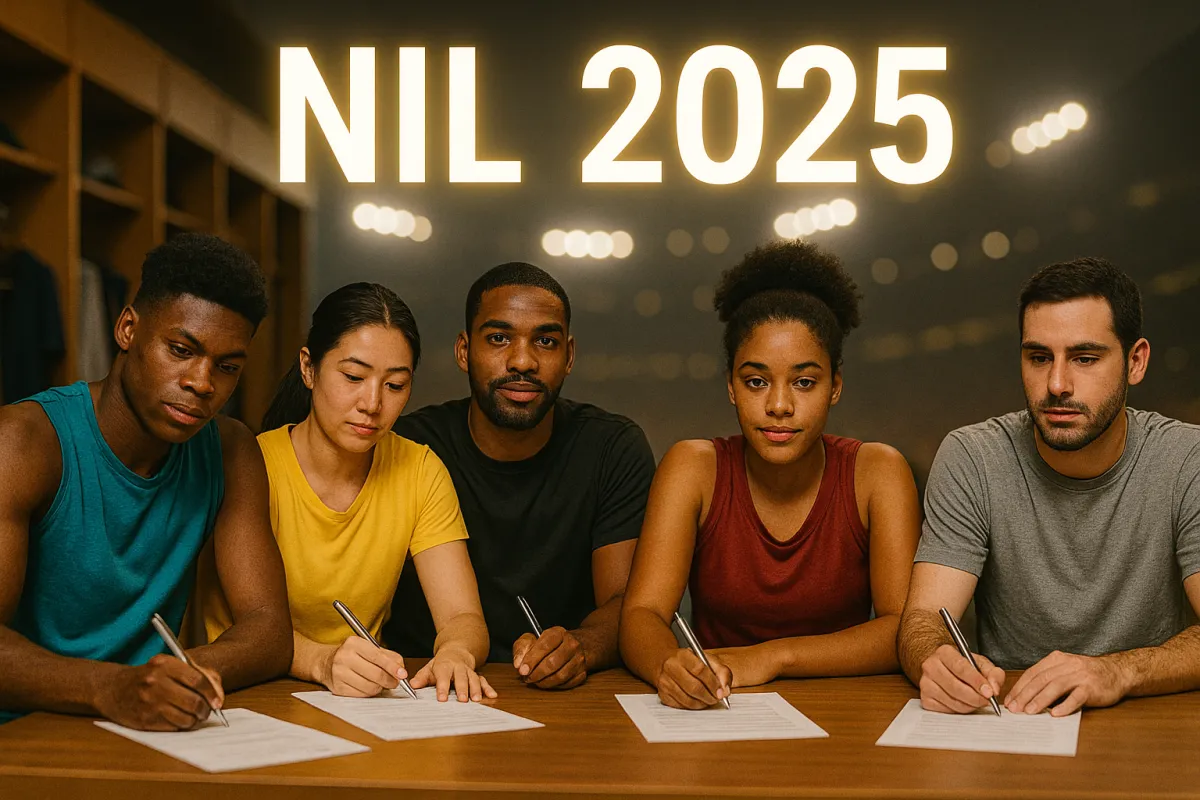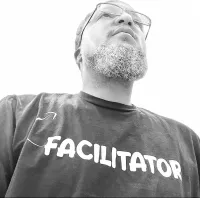

Your Success, Our Priority
Browse our articles below
Make sure to request our FREE Role Player Guide to Recruiting
Click the more stories button for additional articles

From High School to NIL Ready: The New Recruiting Reality
From High School to NIL Ready: The New Recruiting Reality
By Anthony Washington Sr, Facilitate The Process
A New Era for College Sports
College sports have officially entered a new era where athletes are no longer only competing for playing time, but also for paychecks. The 2025 update to Name, Image & Likeness (NIL) rules reshaped the business of college athletics forever.
For the first time, schools in Division I can now pay athletes directly—not just through third-party deals or collectives. This shift comes from the House v. NCAA settlement, which introduced a roughly $20.5 million annual cap per school for athlete compensation starting in 2025 (NCSL.org, 2025).
That number will grow over time and is expected to reach around $33 million per school within a decade (NIL Revolution, 2025).
This is no longer theory. It is payroll.
The Rules Are Changing—Again
The NCAA’s 2025 proposals build an entire layer of oversight into NIL deals. Every agreement worth $600 or more must be reported through a national database, tentatively called NIL Go (NIL Revolution, 2025).
Each deal must serve a valid business purpose. In plain language, that means a brand or company must be paying an athlete for actual promotion or endorsement—not as a recruiting incentive (NCAA.org, 2025).
It sounds simple, but it is not. College athletic departments are now juggling compliance, contract review, and tax education all at once.
Federal Eyes Are Watching
Lawmakers are finally stepping in. Multiple bipartisan bills—like the proposed College SPORTS Act—aim to create a national standard for NIL rules (McClain House Press Release, 2025).
Even the White House is involved. An executive order issued this summer called out “booster-driven pay-for-play arrangements” as a threat to competitive balance (The Guardian, 2025).
Uniformity is coming, but for now, schools and athletes must navigate a confusing patchwork of state laws and institutional policies (Daily Journal, 2025).
The NIL Ripple Hits High School Athletes
High-school and junior-college athletes are now being pulled into the NIL conversation earlier than ever.
NCAA guidelines already hint that prospects who commit to schools with direct-pay models may face early reporting responsibilities (NCAA.org, 2025).
Representation agencies and marketing firms are showing up in the high-school space, offering “brand packages” and NIL consulting long before an athlete signs a letter of intent (Entertainment Law Insights, 2025).
That makes education more important than exposure.
Three Conversations Every Family Must Have
1. “What’s the business purpose?”
Every NIL deal must serve a real commercial purpose. If the only reason an athlete is being paid is to commit or transfer, it is not a compliant NIL deal. That could jeopardize eligibility.
2. “Do we have the paperwork ready?”
The $600-threshold reporting rule means that families should already have a simple system to log deals, endorsements, and payments. A Google Sheet + automation (GoHighLevel or Zapier) can keep that organized.
3. “What’s the brand story?”
Athletes who stand out online—through authentic content, community connection, and value alignment—get the better deals. NIL is now less about celebrity and more about credibility.
The Equity Question
Critics argue that the new NIL system will funnel most of the direct money toward football and men’s basketball. Others point out that Title IX compliance in NIL is murky after the Education Department rescinded earlier gender-equity guidance in February 2025 (Reuters, 2025).
As schools set internal NIL budgets, programs that do not generate TV revenue may struggle to compete.
This creates an opportunity for creative partnerships—non-revenue athletes who understand digital marketing, social impact, and storytelling can build income streams that outperform their sport’s visibility.
Financial Literacy Is No Longer Optional
Athletes entering this ecosystem must treat themselves as small businesses. Taxes, contracts, and financial planning are no longer future conversations—they start the day the first check clears (WAPT News, 2025).
Financial literacy should be part of every athlete’s recruiting education plan.
How to Stay Ready
Facilitate The Process encourages every student-athlete to treat NIL as an opportunity for empowerment, not entitlement.
Build your brand with intention.
Track every dollar and deliverable.
Partner only with companies that align with your values.
Ask, “What problem am I solving for this brand?”
Remember: visibility without responsibility becomes vulnerability.
The Bigger Picture
College sports have evolved from amateur competition to structured commerce. The next decade will reward those who adapt early—athletes, coaches, and families who understand how NIL and recruiting now work together.
Athletes who master the business side will not just get recruited; they will get respected.
Game Plan Takeaways
NIL has become institutionalized—schools can now pay athletes directly.
Every NIL deal ≥ $600 must be reported and tied to a real business purpose.
Federal lawmakers are building national NIL rules, but state variations still apply.
High-school athletes must prepare early with compliant brand and deal systems.
Financial literacy, digital branding, and compliance will separate leaders from followers.
Sources:
NCAA.org (2025) – Proposed Rule Changes Contingent on House Settlement
NCSL.org (2025) – What the NCAA Settlement Means for Colleges and State Legislatures
NIL Revolution (2025) – CSC Publishes New Guidance for NIL Deal Review
McClain House Press Release (2025) – College SPORTS Act Announcement
The Guardian (2025) – Executive Order on College Sports
Reuters (2025) – Education Dept Rescinds Gender-Equity Guidance
WAPT News (2025) – College Athletes Face Financial Challenges with Revenue Sharing
Daily Journal (2025) – Halftime Analysis of NIL in 2025
Resources & Community
🎯
Follow Facilitate The Process on Facebook
https://www.facebook.com/facilitatetheprocess/
🌐
Join Our Recruiting Community
🔗
Get Started Today

